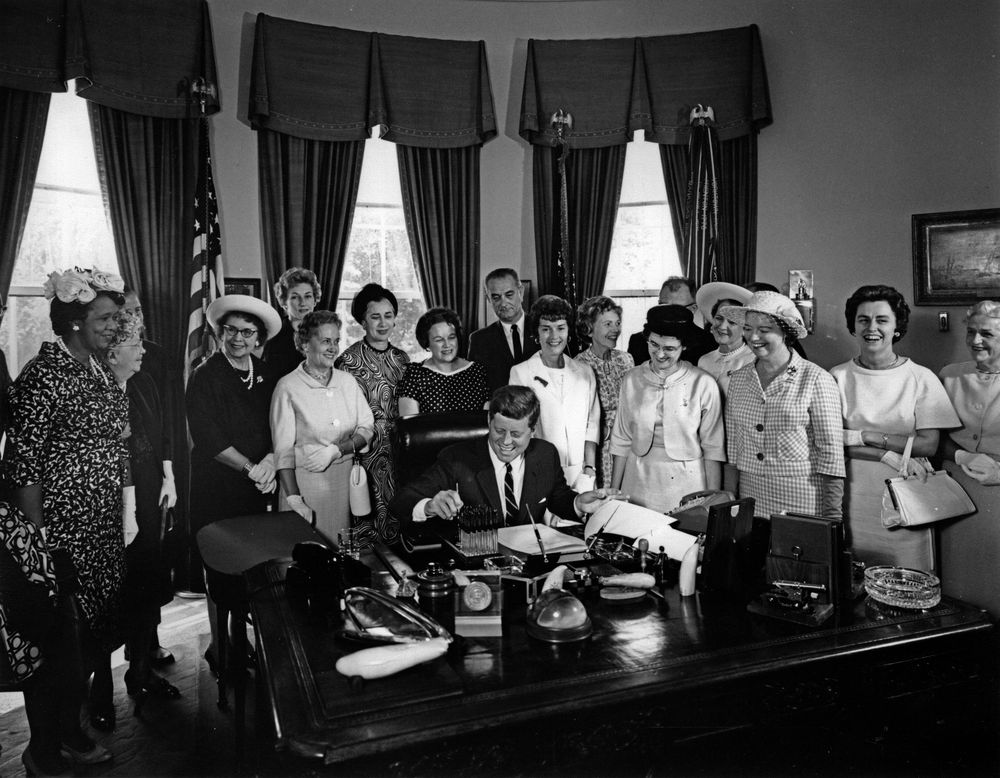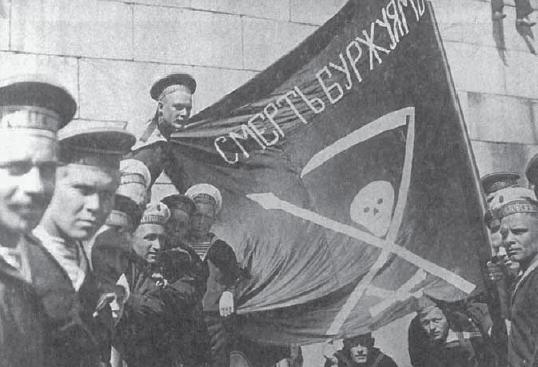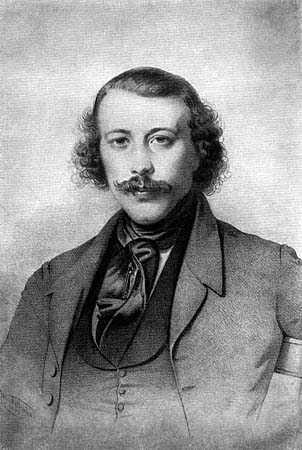|
Avrich, Paul
Paul Avrich (August 4, 1931 – February 16, 2006) was a historian of the 19th and early 20th century anarchist movement in Russia and the United States. He taught at Queens College, City University of New York, for his entire career, from 1961 to his retirement as distinguished professor of history in 1999. He wrote ten books, mostly about anarchism, including topics such as the 1886 Haymarket Riot, 1921 Sacco and Vanzetti case, 1921 Kronstadt naval base rebellion, and an oral history of the movement. As an ally of the movement's major figures, he sought to challenge the portrayal of anarchists as amoral and violent, and collected papers from these figures that he donated as a 20,000-item collection to the Library of Congress. Early and personal life Paul Avrich was born August 4, 1931, in Brooklyn to parents of Jewish and Ukrainian heritage from Odessa. His parents, Rose (née Zapol) Avrich and Murray Avrich, were a Yiddish theater actress and a dress manufacturer, respec ... [...More Info...] [...Related Items...] OR: [Wikipedia] [Google] [Baidu] |
Brooklyn, New York
Brooklyn () is a borough of New York City, coextensive with Kings County, in the U.S. state of New York. Kings County is the most populous county in the State of New York, and the second-most densely populated county in the United States, behind New York County (Manhattan). Brooklyn is also New York City's most populous borough,2010 Gazetteer for New York State . Retrieved September 18, 2016. with 2,736,074 residents in 2020. Named after the Dutch village of Breukelen, Brooklyn is located on the w ... [...More Info...] [...Related Items...] OR: [Wikipedia] [Google] [Baidu] |
Russian Revolution
The Russian Revolution was a period of Political revolution (Trotskyism), political and social revolution that took place in the former Russian Empire which began during the First World War. This period saw Russia abolish its monarchy and adopt a socialist form of government following two successive revolutions and a bloody civil war. The Russian Revolution can also be seen as the precursor for the other European revolutions that occurred during or in the aftermath of WWI, such as the German Revolution of 1918–1919, German Revolution of 1918. The Russian Revolution was inaugurated with the February Revolution in 1917. This first revolt focused in and around the then-capital Petrograd (now Saint Petersburg). After major military losses during the war, the Russian Army had begun to mutiny. Army leaders and high ranking officials were convinced that if Nicholas II of Russia, Tsar Nicholas II abdicated, the domestic unrest would subside. Nicholas agreed and stepped down, usher ... [...More Info...] [...Related Items...] OR: [Wikipedia] [Google] [Baidu] |
National Endowment For The Humanities
The National Endowment for the Humanities (NEH) is an independent federal agency of the U.S. government, established by thNational Foundation on the Arts and the Humanities Act of 1965(), dedicated to supporting research, education, preservation, and public programs in the humanities. The NEH is housed at 400 7th St SW, Washington, D.C. From 1979 to 2014, NEH was at 1100 Pennsylvania Avenue, N.W., Washington, D.C. in the Nancy Hanks Center at the Old Post Office. History and purpose The NEH provides grants for high-quality humanities projects to cultural institutions such as museums, archives, libraries, colleges, universities, public television, and radio stations, and to individual scholars. According to its mission statement: "Because democracy demands wisdom, NEH serves and strengthens our republic by promoting excellence in the humanities and conveying the lessons of history to all Americans." The NEH was created in 1965 as a sub-agency of the National Foundation on ... [...More Info...] [...Related Items...] OR: [Wikipedia] [Google] [Baidu] |
Guggenheim Fellowship
Guggenheim Fellowships are grants that have been awarded annually since by the John Simon Guggenheim Memorial Foundation to those "who have demonstrated exceptional capacity for productive scholarship or exceptional creative ability in the arts." Each year, the foundation issues awards in each of two separate competitions: * One open to citizens and permanent residents of the United States and Canada. * The other to citizens and permanent residents of Latin America and the Caribbean. The Latin America and Caribbean competition is currently suspended "while we examine the workings and efficacy of the program. The U.S. and Canadian competition is unaffected by this suspension." The performing arts are excluded, although composers, film directors, and choreographers are eligible. The fellowships are not open to students, only to "advanced professionals in mid-career" such as published authors. The fellows may spend the money as they see fit, as the purpose is to give fellows "b ... [...More Info...] [...Related Items...] OR: [Wikipedia] [Google] [Baidu] |
Graduate Center, CUNY
The Graduate School and University Center of the City University of New York (CUNY Graduate Center) is a public research institution and post-graduate university in New York City. Serving as the principal doctorate-granting institution of the City University of New York (CUNY) system, The CUNY Graduate Center is classified among " R1: Doctoral Universities – Very High Research Activity". The school is situated in the landmark B. Altman and Company Building at 365 Fifth Avenue in Midtown Manhattan, opposite the Empire State Building. The CUNY Graduate Center has 4,600 students, 31 doctoral programs, 14 master's programs, and 30 research centers and institutes. A core faculty of approximately 140 is supplemented by over 1,800 additional faculty members drawn from throughout CUNY's eleven senior colleges and New York City's cultural and scientific institutions. CUNY Graduate Center faculty include recipients of the Nobel Prize, the Abel Prize, Pulitzer Prize, the National Human ... [...More Info...] [...Related Items...] OR: [Wikipedia] [Google] [Baidu] |
Second-wave Feminism
Second-wave feminism was a period of feminist activity that began in the early 1960s and lasted roughly two decades. It took place throughout the Western world, and aimed to increase equality for women by building on previous feminist gains. Whereas first-wave feminism focused mainly on suffrage and overturning legal obstacles to gender equality (''e.g.'', voting rights and property rights), second-wave feminism broadened the debate to include a wider range of issues: sexuality, family, domesticity, the workplace, reproductive rights, ''de facto'' inequalities, and official legal inequalities. It was a movement that was focused on critiquing the patriarchal, or male-dominated, institutions and cultural practices throughout society. Second-wave feminism also drew attention to the issues of domestic violence and marital rape, created rape-crisis centers and women's shelters, and brought about changes in custody laws and divorce law. Feminist-owned bookstores, credit unions, and r ... [...More Info...] [...Related Items...] OR: [Wikipedia] [Google] [Baidu] |
Vietnam War
The Vietnam War (also known by #Names, other names) was a conflict in Vietnam, Laos, and Cambodia from 1 November 1955 to the fall of Saigon on 30 April 1975. It was the second of the Indochina Wars and was officially fought between North Vietnam and South Vietnam. The north was supported by the Soviet Union, China, and other communist states, while the south was United States in the Vietnam War, supported by the United States and other anti-communism, anti-communist Free World Military Forces, allies. The war is widely considered to be a Cold War-era proxy war. It lasted almost 20 years, with direct U.S. involvement ending in 1973. The conflict also spilled over into neighboring states, exacerbating the Laotian Civil War and the Cambodian Civil War, which ended with all three countries becoming communist states by 1975. After the French 1954 Geneva Conference, military withdrawal from Indochina in 1954 – following their defeat in the First Indochina War – the Viet Minh to ... [...More Info...] [...Related Items...] OR: [Wikipedia] [Google] [Baidu] |
Solidarity
''Solidarity'' is an awareness of shared interests, objectives, standards, and sympathies creating a psychological sense of unity of groups or classes. It is based on class collaboration.''Merriam Webster'', http://www.merriam-webster.com/dictionary/solidarity. It refers to the ties in a society that bind people together as one. The term is generally employed in sociology and the other social sciences as well as in philosophy and bioethics. It is also a significant concept in Catholic social teaching; therefore it is a core concept in Christian democratic political ideology. What forms the basis of solidarity and how it is implemented vary between societies. In global south societies it may be mainly based on kinship and shared values while global north societies accumulate various theories as to what contributes to a sense of solidarity, or rather, social cohesion. Unlike collectivism, solidarism does not reject individuals and sees individuals as the basis of society. Sol ... [...More Info...] [...Related Items...] OR: [Wikipedia] [Google] [Baidu] |
Kronstadt Rebellion
The Kronstadt rebellion ( rus, Кронштадтское восстание, Kronshtadtskoye vosstaniye) was a 1921 insurrection of Soviet sailors and civilians against the Bolshevik government in the Russian SFSR port city of Kronstadt. Located on Kotlin Island in the Gulf of Finland, Kronstadt defended the former capital city, Petrograd, as the base of the Baltic Fleet. For sixteen days in March 1921, rebels in Kronstadt's naval fortress rose in opposition to the Soviet government they had helped to consolidate. Led by Stepan Petrichenko, it was the last major revolt against the Bolshevik regime on Russian territory during the Russian Civil War. Disappointed in the direction of the Bolshevik government, the rebels—whom Leon Trotsky himself had praised earlier as "adornment and pride of the revolution"—demanded a series of reforms: reduction in Bolshevik power, newly elected ''soviet'' councils to include socialist and anarchist groups, economic freedom for peasants an ... [...More Info...] [...Related Items...] OR: [Wikipedia] [Google] [Baidu] |
Piotr Kropotkin
Pyotr Alexeyevich Kropotkin (; russian: link=no, Пётр Алексе́евич Кропо́ткин ; 9 December 1842 – 8 February 1921) was a Russian anarchist, socialist, revolutionary, historian, scientist, philosopher, and activist who advocated anarcho-communism. Born into an aristocratic land-owning family, Kropotkin attended a military school and later served as an officer in Siberia, where he participated in several geological expeditions. He was imprisoned for his activism in 1874 and managed to escape two years later. He spent the next 41 years in exile in Switzerland, France (where he was imprisoned for almost four years) and England. While in exile, he gave lectures and published widely on anarchism and geography. Kropotkin returned to Russia after the Russian Revolution in 1917, but he was disappointed by the Bolshevik state. Kropotkin was a proponent of a decentralised communist society free from central government and based on voluntary association ... [...More Info...] [...Related Items...] OR: [Wikipedia] [Google] [Baidu] |
Mikhail Bakunin
Mikhail Alexandrovich Bakunin (; 1814–1876) was a Russian revolutionary anarchist, socialist and founder of collectivist anarchism. He is considered among the most influential figures of anarchism and a major founder of the revolutionary socialist and social anarchist tradition. Bakunin's prestige as a revolutionary also made him one of the most famous ideologues in Europe, gaining substantial influence among radicals throughout Russia and Europe. Bakunin grew up in Pryamukhino, a family estate in Tver Governorate. From 1840, he studied in Moscow, then in Berlin hoping to enter academia. Later in Paris, he met Karl Marx and Pierre-Joseph Proudhon, who deeply influenced him. Bakunin's increasing radicalism ended hopes of a professorial career. He was expelled from France for opposing The Russian Empire's occupation of Poland. In 1849, he was arrested in Dresden for his participation in the Czech rebellion of 1848 and deported to Russian Empire, where he was imprisoned fir ... [...More Info...] [...Related Items...] OR: [Wikipedia] [Google] [Baidu] |
Freie Arbeiter Stimme
''Freie Arbeiter Stimme'' ( yi, פֿרייע אַרבעטער שטימע, romanized: ''Fraye arbeṭer shṭime'', ''lit.'' 'Free Voice of Labor') was a Yiddish-language anarchist newspaper published from New York City's Lower East Side between 1890 and 1977. It was among the world's longest running anarchist journals, and the primary organ of the Jewish anarchist movement in the United States; at the time that it ceased publication it was the world's oldest Yiddish newspaper. Historian of anarchism Paul Avrich described the paper as playing a vital role in Jewish–American labor history and upholding a high literary standard, having published the most lauded writers and poets in Yiddish radicalism. The paper's editors were major figures in the Jewish–American anarchist movement: David Edelstadt, Saul Yanovsky, Joseph Cohen, Hillel Solotaroff, Roman Lewis, and Moshe Katz. Protesting against the injustices of the Haymarket trial, Jewish anarchists in New York formed the Pion ... [...More Info...] [...Related Items...] OR: [Wikipedia] [Google] [Baidu] |







